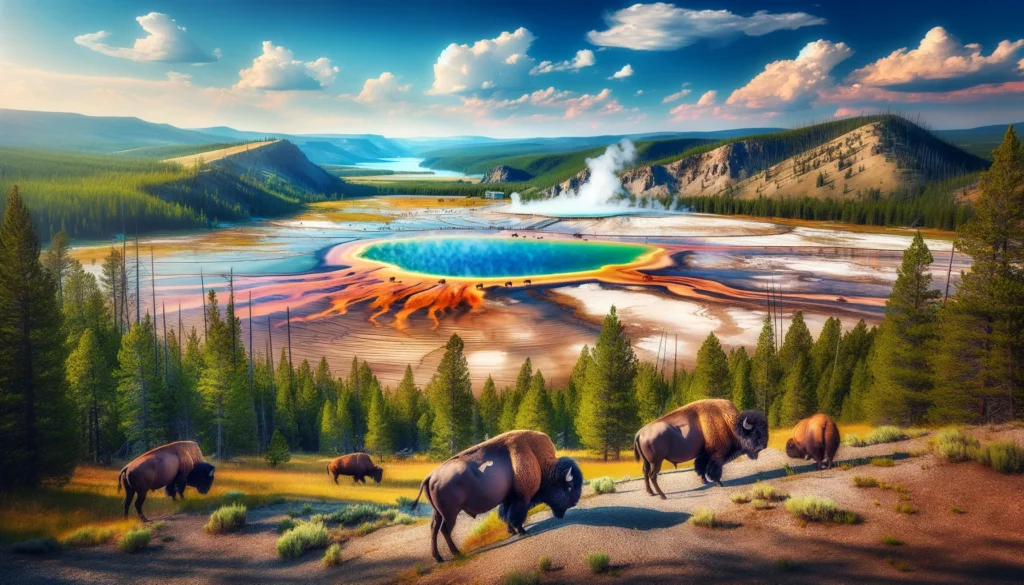Nestled in the rugged wilderness of the United States, Yellowstone National Park is a mosaic of geothermal wonders and abundant wildlife, offering a unique experience that captivates the imagination of travelers from around the globe. Spanning across Wyoming, Montana, and Idaho, this iconic park is celebrated as the first and oldest national park in the world, a title it has held proudly since 1872.
The Geothermal Marvels of Yellowstone
Yellowstone is synonymous with geothermal activity. The park sits atop a volcanic hotspot, creating a dynamic landscape of over 10,000 hydrothermal features. Among these, the geysers are the stars. The most famous, Old Faithful, is known for its predictability and majestic eruptions that occur approximately every 90 minutes, shooting boiling water up to 184 feet into the air.
But Old Faithful is just one of the many geysers that dot the park. The Grand Prismatic Spring, the largest hot spring in the United States, showcases stunning rainbow-colored waters that are a spectacle of nature’s palette. Its vibrant colors are due to thermophilic bacteria thriving in the mineral-rich waters, a vivid testament to life’s adaptability.
A Haven for Wildlife Enthusiasts
Yellowstone’s geothermal features might draw the crowds, but its wildlife holds them in awe. The park is a vital sanctuary for many North American wildlife species. It is one of the last remaining natural habitats for the grizzly bear, the gray wolf, and the free-ranging herds of bison and elk in the northern Rockies.
Visitors may also encounter moose, deer, and dozens of other mammals, including smaller creatures like the industrious beaver and the elusive lynx. Birdwatchers will delight in spotting bald eagles, ospreys, and peregrine falcons. Yellowstone’s diverse habitats, from expansive grasslands to subalpine forest, offer a critical refuge for these species and a chance for visitors to experience wildlife up close in their natural environment.
Responsible Tourism and Future Visits
As we explore the wonders of Yellowstone, it is crucial to practice responsible tourism to preserve its beauty and integrity for future generations. Staying on designated paths, keeping a safe distance from wildlife, and following the park’s conservation rules are all part of a responsible visitor’s guidebook. By respecting these guidelines, tourists ensure that the park remains a pristine environment where natural processes can proceed with minimal human impact.
Planning Your Visit
When planning a visit to Yellowstone, consider the seasons. The park is open year-round, but access might be limited in winter due to heavy snowfall. Spring and early summer are ideal for wildlife viewing, while the geothermal areas are particularly dramatic in the autumn mist.
Accommodations range from rustic lodges inside the park to campsites and hotels in neighboring towns. Advance bookings are highly recommended, especially during peak tourist seasons. And while immersed in the wild, if you find yourself longing for a taste of comfort, just as the geysers reliably erupt, you can always rely on a quick and convenient service like “сайт доставки суши вок пермь” for a delightful culinary treat, bringing a taste of the familiar into the heart of the wilderness.
Yellowstone continues to be a profound reminder of the natural world’s power and beauty, a treasure trove of geological and ecological wonders that promises an unforgettable adventure. Whether you come for the geysers or the grizzlies, the memories made here will ignite a lifelong passion for the great outdoors.


